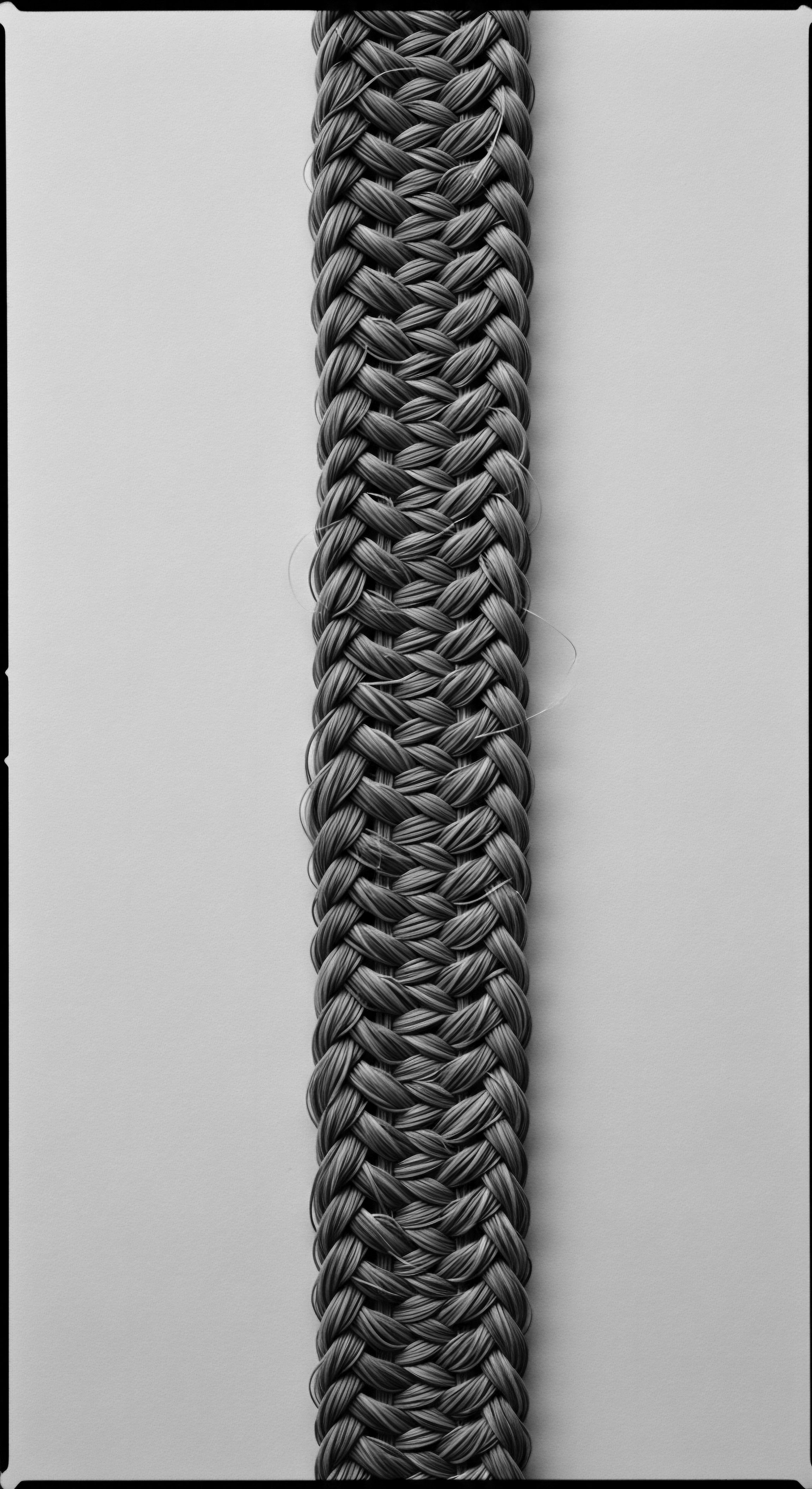
Fundamentals
Within the sacred ‘living library’ of Roothea, where every strand tells a story and every tradition holds ancestral wisdom, the concept of Friction Reduction emerges as a profound and elemental principle. It is not merely a technical term confined to scientific journals, but a deep-seated understanding woven into the very fabric of textured hair heritage. At its most fundamental, Friction Reduction signifies the mindful mitigation of abrasive forces that act upon hair, whether these forces arise from strand-on-strand interaction, contact with external surfaces like fabrics or tools, or the everyday motions of life.
For textured hair, particularly the tightly coiled, spiraled, and often delicate structures characteristic of Black and mixed-race hair, this reduction of mechanical stress holds unparalleled significance. It is a protective shield, an act of preservation against the relentless wear that can compromise the hair’s structural integrity, leading to breakage, splintered ends, and the diminishment of inherent moisture.
Ancestral communities, long before the advent of microscopes or laboratories, possessed an innate grasp of this principle. Their practices, passed down through generations, were, in essence, sophisticated systems of friction management. These were not random acts of beautification; rather, they were deeply considered rituals, born from intimate observation of hair’s needs within diverse environments and daily lives.
The very act of gathering for communal hair care sessions, often under the shade of ancient trees, fostered an environment where hair was handled with reverence, its delicate nature honored through gentle hands and deliberate movements. This collective wisdom recognized that minimizing physical strain was paramount for the health and vitality of hair that, by its very nature, possesses points of vulnerability due to its unique curl patterns.
The earliest expressions of Friction Reduction were organic, drawn directly from the bounties of the earth. Natural emollients, rich in fatty acids and vitamins, were sourced and prepared with meticulous care. These ingredients, such as plant oils and various butters, provided a slippery cushion, allowing hair strands to glide past one another with less resistance.
This elemental understanding of lubrication, a cornerstone of Friction Reduction, protected the outermost layer of the hair, the cuticle, from lifting and fraying. When the cuticle remains smooth and aligned, it serves as an effective barrier, sealing in the hair’s precious internal moisture and reflecting light, bestowing a healthy radiance.
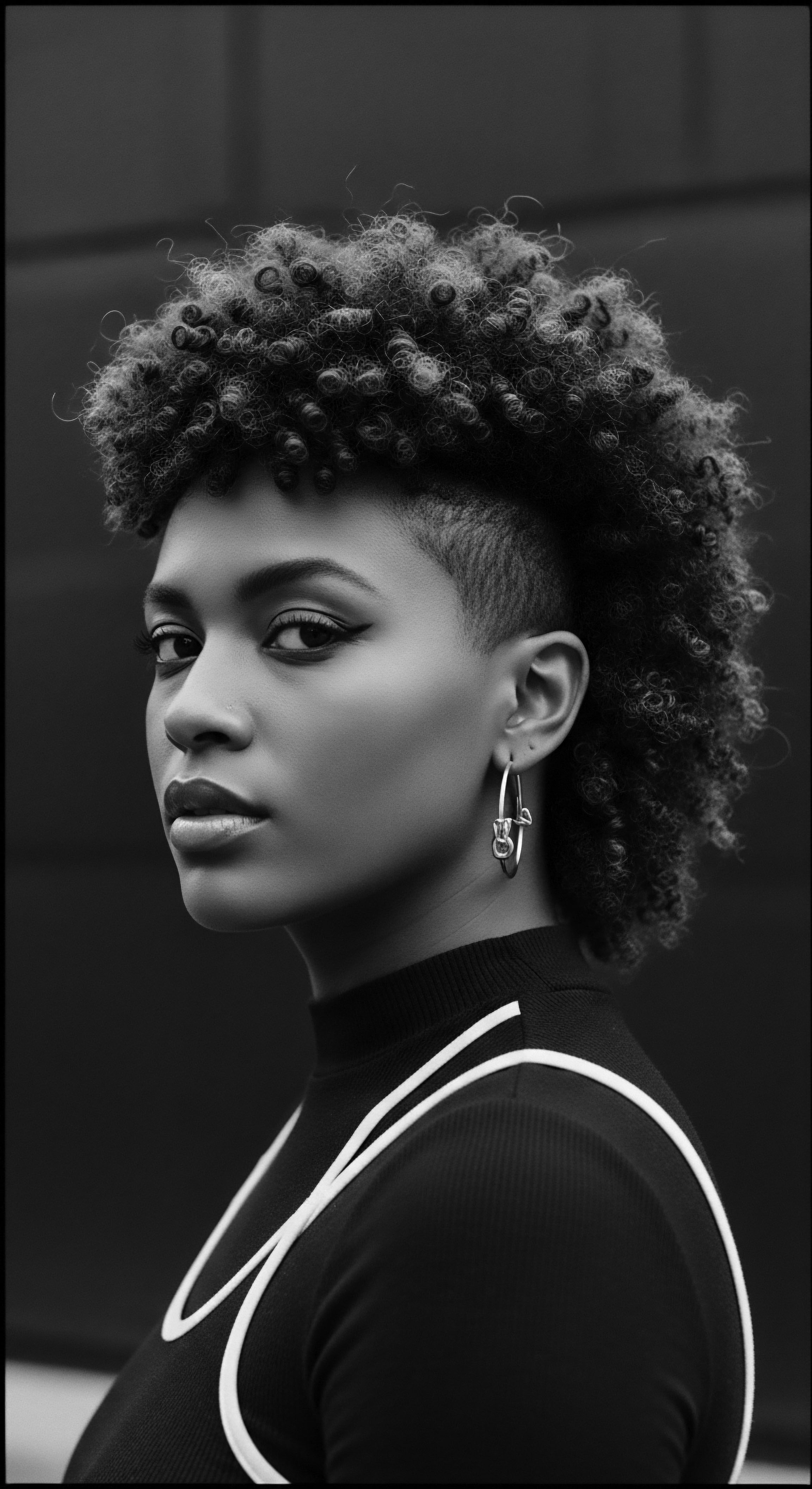
Echoes from the Source ❉ Ancestral Beginnings of Friction Reduction
The wisdom of minimizing friction in hair care finds its roots in the earliest human civilizations, particularly across the African continent. Before written records detailed hair’s microscopic structure, daily life necessitated practical solutions for maintaining hair health in challenging climates and active lifestyles. The inherent curl of indigenous hair, while offering unique beauty and versatility, also presented distinct challenges.
These tight coils naturally interlock, making them prone to tangling and subsequent breakage if not handled with care. The ingenuity of ancestral communities led to the development of methods that intuitively addressed these vulnerabilities.
Ancestral hair care practices, deeply rooted in the rhythms of daily life and the bounty of the earth, laid the foundational understanding of friction reduction for textured hair.
Consider the ancient practices of applying natural butters and oils. For instance, Shea Butter, extracted from the nuts of the Vitellaria paradoxa tree native to West Africa, has been used for thousands of years, with its presence documented as far back as the 14th century. Known affectionately as “women’s gold” in many communities, this rich, ivory-hued balm served not only as a skin protectant but as a vital hair sealant.
Its fatty acid composition provided an occlusive layer that helped retain moisture within the hair shaft, simultaneously creating a smooth exterior that reduced friction between strands and against external elements. This ancient application of a natural emollient exemplifies a fundamental understanding of Friction Reduction – a proactive measure to safeguard the hair’s integrity.
Beyond topical applications, the very styles crafted by ancestral hands were acts of Friction Reduction. Protective styles, such as Braids, Twists, and later, Cornrows, which originated in Namibia around 3500 BC, served a purpose far beyond adornment or social signaling. These styles, meticulously sectioned and interwoven, gathered delicate strands into cohesive units, thereby minimizing individual strand exposure to environmental stressors and constant manipulation.
By securing the hair in these structured forms, the daily abrasion from movement, clothing, or even sleep was significantly lessened. This deliberate arrangement of hair into protective configurations represents an early, sophisticated form of Friction Reduction through structural design.
- Shea Butter ❉ An ancient emollient from West Africa, revered for its ability to moisturize and create a smooth, protective layer on hair, effectively reducing abrasive forces.
- Palm Oil ❉ Another historical lubricant, often used in West and Central Africa for scalp oiling, contributing to the hair’s pliability and ease of handling.
- Coconut Oil ❉ Though perhaps more widely associated with South Asian traditions, various natural oils were regionally significant, offering similar lubricating benefits for hair care across diverse ancestral communities.
The meaning of Friction Reduction, therefore, began as an intuitive response to the intrinsic nature of textured hair and the environmental conditions in which it flourished. It was a practical wisdom, deeply embedded in the daily rhythms of life, where hair care was not merely a chore but a communal practice, a moment of connection, and a silent testament to the enduring human capacity for innovation and care. The initial delineation of Friction Reduction was born from the necessity to preserve the vitality of hair, recognizing its inherent beauty and its symbolic weight within community and identity.
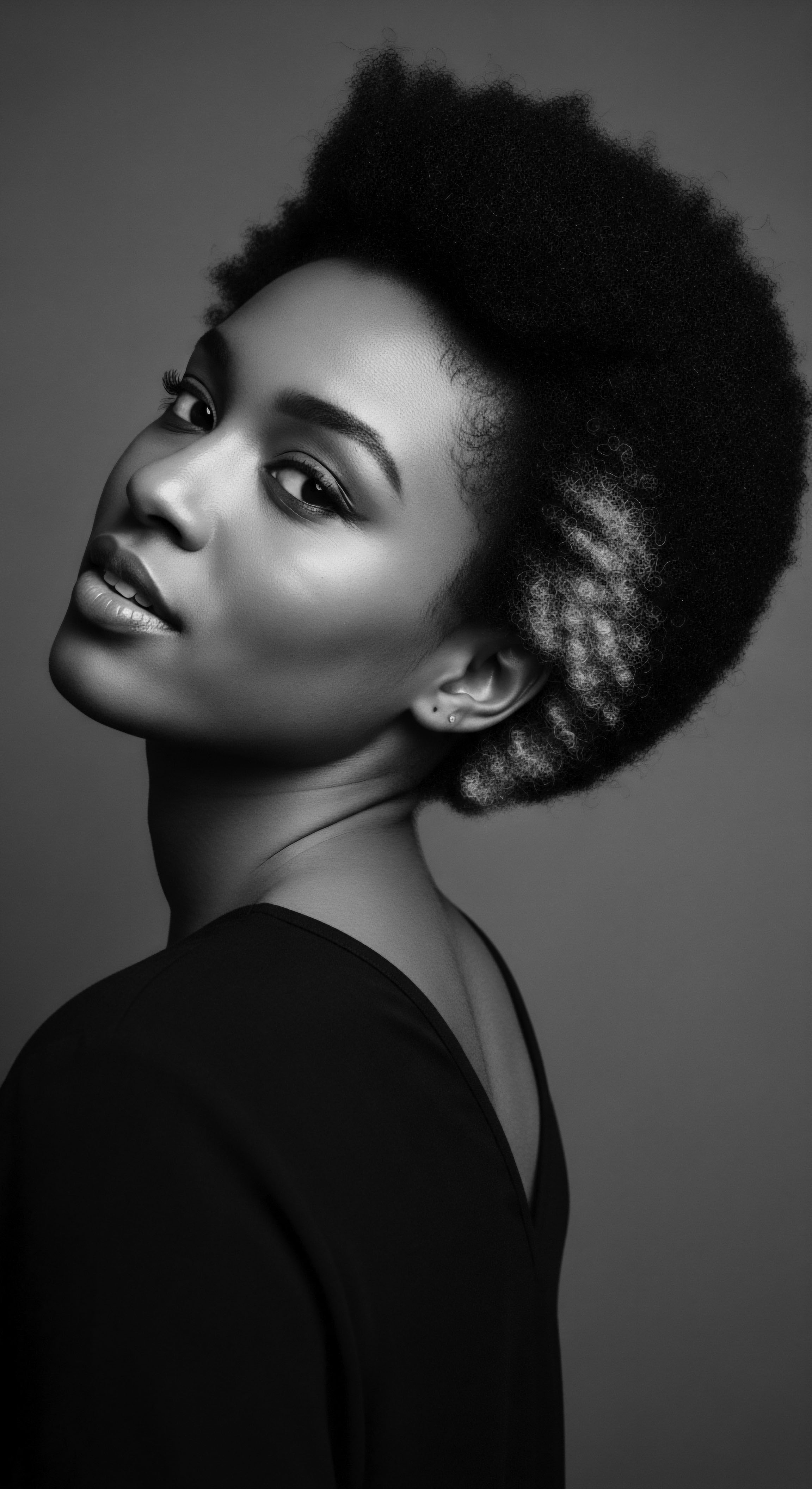
Intermediate
Moving beyond the foundational understanding, the intermediate exploration of Friction Reduction reveals its dynamic evolution within textured hair heritage, showcasing how ancestral practices have been meticulously passed down, refined, and adapted across generations and continents. This section delves into the practical applications of Friction Reduction within traditional and evolving hair care rituals, highlighting the continuity of knowledge and the ingenuity of Black and mixed-race communities in preserving their hair’s vitality. The significance of Friction Reduction expands here to encompass not only physical protection but also the cultural resilience embedded in these enduring practices.
The intricate structural characteristics of textured hair, with its elliptical cross-section and numerous twists and turns along each strand, naturally create points of contact where friction can occur more readily than in straighter hair types. This inherent architecture means that the journey of natural oils, or sebum, from the scalp along the hair shaft is often impeded, contributing to dryness and, consequently, increased susceptibility to breakage. Traditional hair care, therefore, was not simply about aesthetics; it was a science of survival for the strand, a careful dance designed to counteract these predispositions. The collective understanding within communities recognized that regular, gentle manipulation, coupled with the application of specific substances, was essential to maintain the hair’s delicate balance.
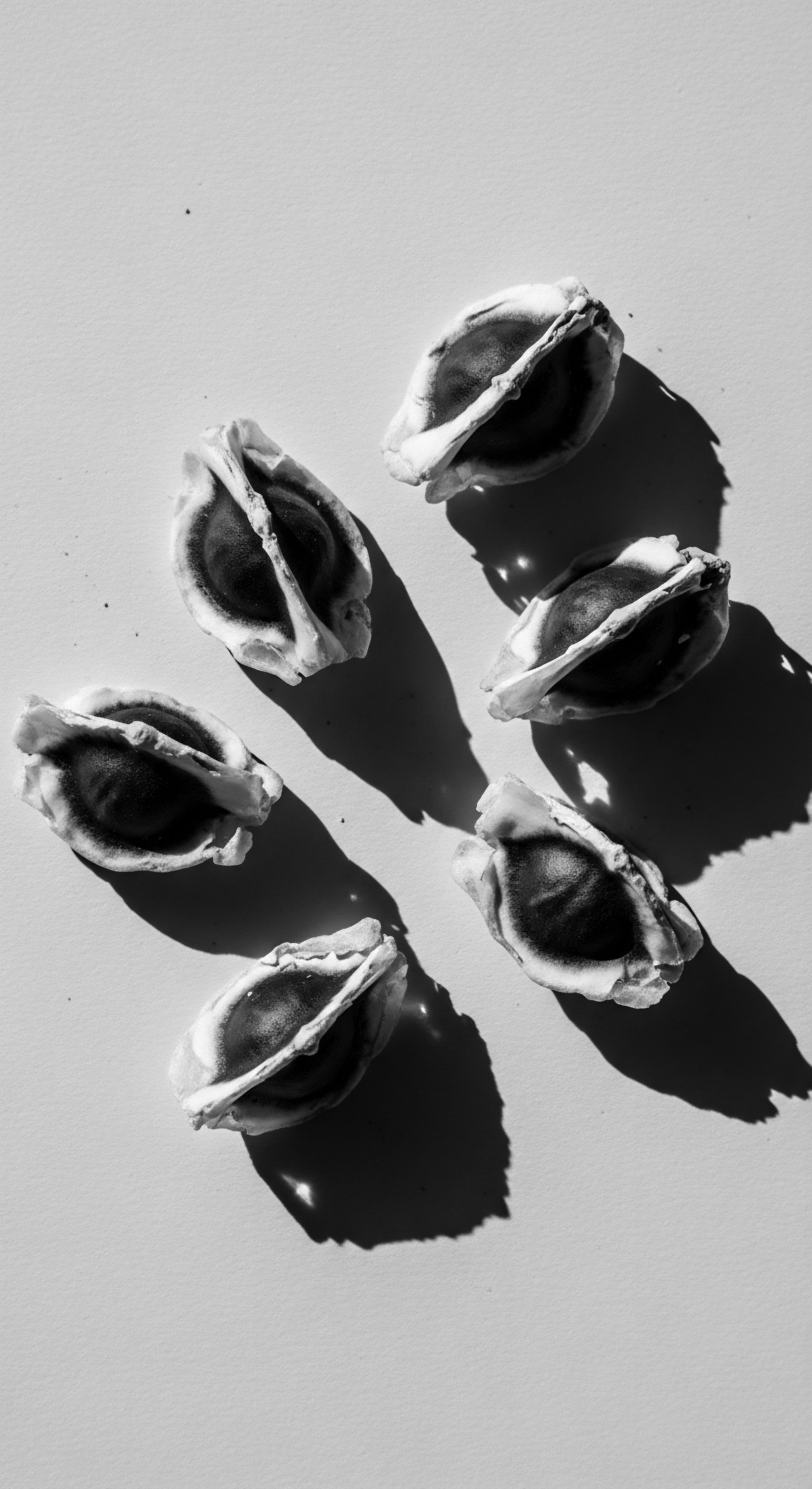
The Tender Thread ❉ Living Traditions of Care and Community
The continuity of heritage knowledge surrounding Friction Reduction is most vividly expressed through the enduring rituals of hair care that have traversed the diaspora. These practices, often performed within familial circles, served as vital conduits for cultural transmission, reinforcing bonds while safeguarding hair. The hands that braided, oiled, and wrapped hair were not just performing a task; they were imbuing each movement with generations of accumulated wisdom, teaching patience, precision, and profound respect for the hair’s living presence.
One potent example of this evolving understanding is the widespread adoption and adaptation of Headwraps and bonnets. While headwraps held multifaceted meanings across pre-colonial African societies, symbolizing status, age, or spiritual connection, their practical utility in Friction Reduction became particularly pronounced during and after the transatlantic slave trade. Enslaved women, stripped of many traditional tools and resources, ingeniously adapted head coverings, often made of rough fabrics, to protect their hair from the elements, physical labor, and forced appearances.
As materials evolved, the use of silk and satin for head coverings and pillowcases gained prominence, a testament to an ancestral understanding of how smooth surfaces reduce friction and preserve delicate hair structures during sleep. This transition reflects an ongoing, adaptive strategy for hair protection, ensuring moisture retention and minimizing mechanical stress that could lead to tangles and breakage.
The generational transfer of hair care rituals, from communal braiding sessions to the adoption of silk headwraps, exemplifies the living heritage of Friction Reduction.
The application of nourishing substances also saw a continuum of practice. Beyond shea butter, a diverse array of natural oils and plant-based ingredients were utilized, each chosen for its specific properties. These substances, often applied during detangling or styling, created a lubricated environment, allowing combs and fingers to glide through coils with less resistance.
The very act of Finger Detangling, a practice still widely employed today, is a direct embodiment of Friction Reduction, prioritizing the gentle separation of strands over aggressive combing that can cause damage. This methodical approach to untangling, often accompanied by the application of oils or water-based conditioners, speaks to a deep awareness of hair’s fragility when dry and prone to interlocking.
Consider the deliberate rhythm of hair care routines within many Black households ❉ a sequence of cleansing, conditioning, moisturizing, and protective styling. Each step is implicitly designed to manage friction. Shampoos formulated for textured hair often aim to decrease combing friction and improve manageability. Conditioners and leave-in products are chosen for their ability to decrease interfiber friction, making hair easier to comb and reducing static charge.
The popular LOC (Liquid, Oil, Cream) or LCO (Liquid, Cream, Oil) methods, widely practiced today, are sophisticated moisturizing regimens that layer products to seal in hydration, effectively creating a barrier that reduces friction and moisture loss. These methods are not modern inventions but contemporary expressions of ancient layering techniques that used water, natural oils, and plant butters to keep hair supple and protected.
| Traditional Practice Oiling and Buttering (e.g. Shea, Palm, Coconut) |
| Primary Mechanism of Friction Reduction Lubrication of hair strands, creating a smooth surface for reduced inter-strand and external friction, sealing cuticles, and retaining moisture. |
| Traditional Practice Protective Styling (e.g. Braids, Twists, Cornrows, Locs) |
| Primary Mechanism of Friction Reduction Minimizing manipulation, reducing exposure to environmental stressors, and consolidating strands to lessen individual hair movement and abrasion. |
| Traditional Practice Headwraps and Bonnets (especially silk/satin) |
| Primary Mechanism of Friction Reduction Creating a smooth, low-friction surface for hair to rest against during sleep or daily activities, preventing tangles, frizz, and breakage from abrasive fabrics. |
| Traditional Practice Finger Detangling |
| Primary Mechanism of Friction Reduction Gentle, deliberate separation of tangles using fingers, which allows for tactile sensing of knots and reduces the aggressive pulling associated with combs. |
| Traditional Practice These heritage practices collectively demonstrate a deep, embodied understanding of hair's delicate nature and the necessity of mindful interaction to preserve its strength and beauty. |
The ongoing practice of protective styling, from the timeless elegance of Box Braids to the enduring symbolism of Locs, continues to embody the principles of Friction Reduction. These styles, designed for long-term wear, significantly reduce the need for daily manipulation, heat application, and environmental exposure, thereby minimizing mechanical stress and breakage. The wisdom in these styles is not just about convenience; it is a conscious decision to shield the hair, allowing it to flourish and retain its length and health by actively reducing the opportunities for friction-induced damage. The meaning of Friction Reduction at this intermediate level is thus revealed as a continuous, culturally informed practice, deeply rooted in ancestral wisdom and adapted to contemporary needs, always with the preservation of textured hair at its core.
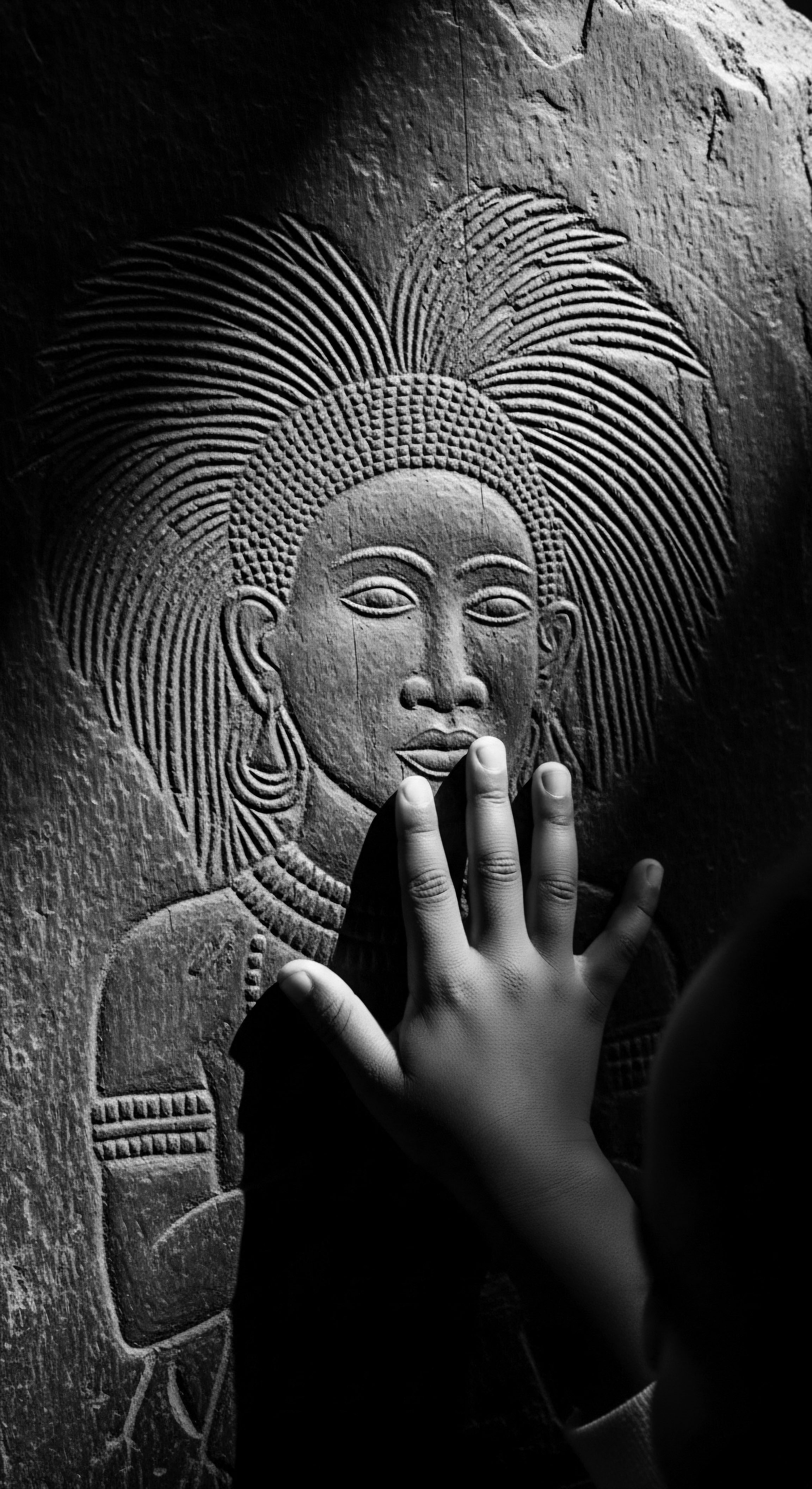
Academic
At an advanced scholarly level, the Friction Reduction for textured hair signifies a multifaceted concept, encompassing biomechanical imperatives, historical socio-political responses, and contemporary scientific validation, all profoundly anchored in the heritage of Black and mixed-race hair. It is a sophisticated delineation, revealing the intricate interplay between the unique biological architecture of textured hair and the adaptive, often defiant, cultural practices developed over millennia to preserve its integrity and express identity. This advanced understanding moves beyond simple definitions, offering a deeply insightful explication of Friction Reduction’s full significance and implications for understanding and celebrating this living heritage.
The structural particularities of Afro-textured hair, characterized by its tightly coiled, often elliptical cross-section and an asymmetrical S-shaped follicle, render it inherently more susceptible to mechanical strain and breakage compared to straighter hair types. The numerous twists and turns along each strand create natural points of weakness and increased surface area for inter-fiber contact, escalating the propensity for tangling and knot formation. This unique morphology also hinders the efficient distribution of sebum, the scalp’s natural lubricant, along the entire hair shaft, contributing to chronic dryness and a more exposed cuticle layer. Consequently, the forces generated during routine grooming—combing, brushing, styling, or even contact with fabrics—can lead to significant cuticle abrasion, fiber fracture, and subsequent moisture loss, thereby perpetuating a cycle of fragility.
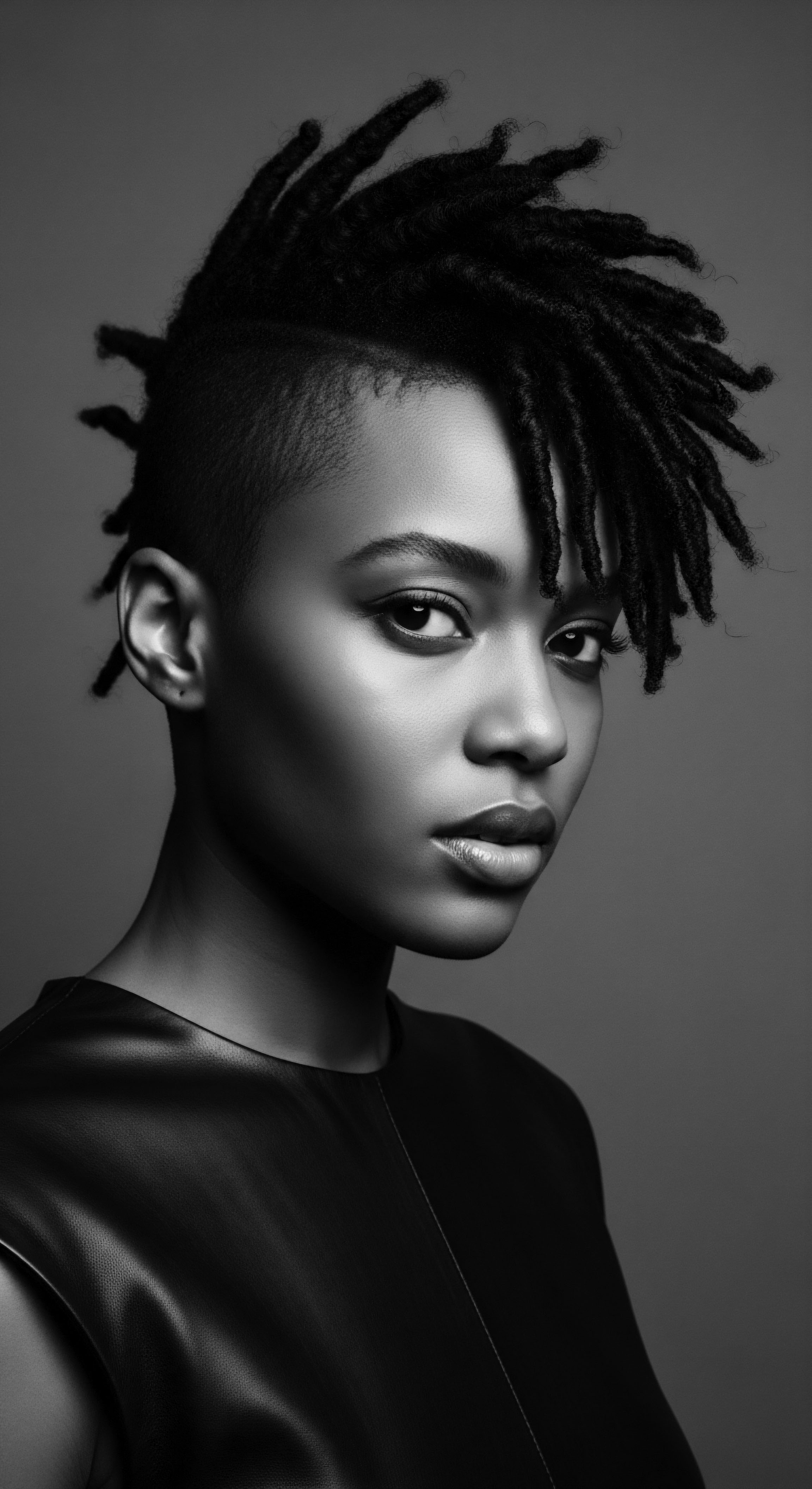
Biomechanical Imperatives and Ancestral Ingenuity
The academic lens reveals that ancestral hair care practices were not merely intuitive but were sophisticated, empirical responses to these specific biomechanical challenges. The widespread use of natural oils and butters, such as Shea Butter and Jojoba Oil, across various African communities and their diasporic descendants, represents a profound understanding of lipid chemistry and its role in cuticle protection and moisture retention. These emollients, rich in fatty acids, function as external lubricants, effectively reducing the coefficient of friction between hair strands and between hair and external surfaces. This external lubrication minimizes the mechanical energy required for detangling and styling, thereby mitigating cuticle damage and preventing the propagation of micro-fractures along the hair shaft.
Friction Reduction for textured hair represents a profound historical and scientific convergence, where ancestral ingenuity in hair care directly addressed the biomechanical vulnerabilities of coiled strands.
Consider the case of the “hot Comb,” an instrument that emerged in the late 19th century and became a pervasive tool for hair straightening within Black communities. While often associated with the pursuit of Eurocentric beauty standards, its very design and application speak to an underlying, albeit sometimes damaging, attempt at Friction Reduction. The hot comb, when used with a petrolatum-based oil, aimed to create a smooth, temporary alteration of the hair’s coiled structure, allowing for easier passage of the comb and a reduction in inter-fiber friction.
This historical example, though problematic in its long-term effects on hair health due to heat damage, demonstrates a recognition of the need to reduce mechanical resistance for manageability. It underscores how the imperative of Friction Reduction, even when pursued through less optimal means, has been a constant in the textured hair experience.
The strategic adoption of Protective Hairstyles, from ancient Cornrows to contemporary Braids and Locs, offers another compelling academic perspective on Friction Reduction. These styles effectively minimize the hair’s exposure to environmental stressors and daily manipulation by consolidating individual strands into larger, more resilient units. This structural aggregation reduces the frequency of combing and brushing, which are significant sources of friction-induced damage for tightly coiled hair.
Furthermore, protective styles shield the delicate ends of the hair, which are the oldest and most vulnerable parts of the strand, from constant abrasion against clothing or bedding. The historical use of these styles, often serving as markers of identity, social status, or even as covert communication tools during periods of oppression, highlights their dual function ❉ cultural preservation and biomechanical protection.
The academic discourse also examines the psycho-social dimensions of Friction Reduction. The historical marginalization and stigmatization of natural textured hair in many societies, particularly post-slavery, created immense pressure for Black individuals to alter their hair to conform to Eurocentric ideals of straightness. This societal friction, manifested as discrimination in educational and professional settings, directly influenced hair care practices, often leading to the use of harsh chemical relaxers and excessive heat styling. These methods, while aiming to reduce the physical friction associated with managing highly coiled hair, often introduced severe chemical and thermal damage, paradoxically increasing the hair’s fragility and susceptibility to breakage.
A recent study sponsored by Dove (2019) reported that Black women are 3.4 times more likely to be labeled unprofessional due to hair presentation and 1.5 times more likely to be sent home citing “unprofessional hair,” underscoring the enduring societal friction that compels hair alteration. This reveals that Friction Reduction, in a broader sense, also encompasses the societal pressure to reduce the “friction” of non-conformity.
From a business and research perspective, understanding the nuances of Friction Reduction in textured hair is paramount for product innovation and ethical care. The development of specialized hair care lines, particularly those focusing on moisture retention and slip, directly addresses the unique needs of coiled hair. This includes products designed to reduce tangling and improve wet combability, which have been shown to directly reduce breakage in afro-textured hair.
The market for products tailored to Black and mixed-race hair, estimated to be substantial, reflects a growing recognition of these specific requirements, moving beyond generic formulations to create solutions that genuinely honor the hair’s inherent structure and historical care traditions. This involves a deeper exploration of ingredients that mimic natural sebum, create effective emollient barriers, and provide superior slip without weighing the hair down.
Future insights into Friction Reduction will likely involve advanced material science, exploring novel polymers and botanical extracts that can create even more effective, durable, and lightweight protective layers on the hair shaft. This includes research into how genetic variations influence hair morphology and lipid content, allowing for increasingly personalized care strategies that further optimize friction management at a molecular level. The long-term success of hair care strategies for textured hair hinges upon a continued commitment to scientifically validating and refining practices that align with ancestral wisdom, ensuring that the hair’s journey from elemental biology to contemporary expression is one of sustained health and celebrated identity.
- Elliptical Cross-Section ❉ The distinct, non-circular shape of textured hair strands, contributing to increased points of contact and inter-fiber friction.
- Cuticle Integrity ❉ The smooth, outermost layer of the hair, whose alignment is crucial for moisture retention and reduced friction; damage to this layer leads to frizz and breakage.
- Sebum Distribution ❉ The natural difficulty of the scalp’s oils to travel down the highly coiled hair shaft, resulting in inherent dryness and a greater need for external lubrication.
The definition of Friction Reduction, therefore, transcends a simple physical concept. It is a deeply layered interpretation, a statement of profound significance that encompasses the very essence of how textured hair has been understood, cared for, and celebrated across time. It is a designation that acknowledges the continuous struggle against both physical abrasion and societal prejudice, and a clarification of the enduring practices that have allowed Black and mixed-race hair to retain its strength, beauty, and profound cultural import. The elucidation of Friction Reduction within Roothea’s ‘living library’ is thus a testament to the wisdom embedded in ancestral practices, affirmed by scientific understanding, and continuously shaping the future of textured hair care.
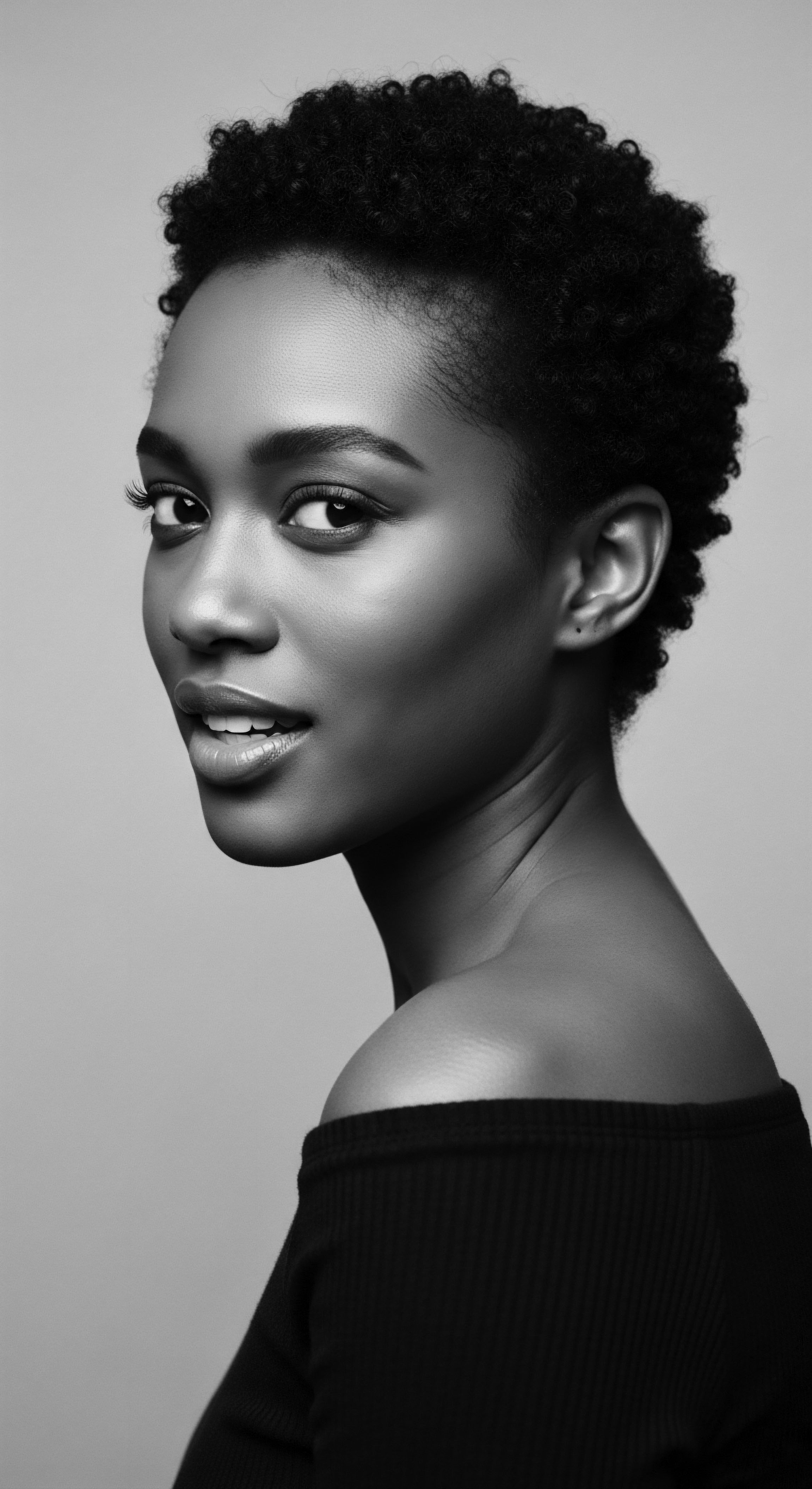
Reflection on the Heritage of Friction Reduction
The journey through the meaning of Friction Reduction within Roothea’s ‘living library’ is more than an academic exercise; it is a profound meditation on the enduring spirit of textured hair and its communities. From the elemental biology of the coiled strand to the intricate dance of ancestral hands applying natural butters, and through the complex tapestry of historical resilience, we witness a continuous thread of care and defiance. This concept, often overlooked in its simplicity, carries the weight of generations who instinctively understood the delicate nature of their crowning glory and devised ingenious methods to preserve it. The ‘Soul of a Strand’ ethos reminds us that every braid, every oiling ritual, every headwrap, is not merely a styling choice but an act of profound self-preservation and cultural affirmation.
The heritage of Friction Reduction teaches us that true care is a mindful interaction, a gentle communion with the hair that honors its unique architecture. It speaks to the wisdom of slowing down, of listening to the hair’s needs, and of recognizing that the most effective solutions often echo ancient practices. The enduring significance of protective styles and natural emollients is a testament to the timeless efficacy of these methods, which modern science now often validates. It is a celebration of the human capacity to adapt, to innovate, and to maintain beauty and dignity even in the face of immense challenge.
This continuous understanding of Friction Reduction shapes not only how we care for textured hair today but also how we perceive its future. It invites us to move forward with reverence for the past, allowing ancestral wisdom to guide contemporary innovation. The unbound helix, the very symbol of textured hair’s resilience, continues to tell its story, a story of protection, strength, and an unbreakable connection to a rich and vibrant heritage. The ongoing commitment to reducing friction, in all its forms—physical, environmental, and societal—is a pledge to honor this legacy, ensuring that textured hair continues to flourish as a powerful expression of identity, history, and profound beauty.
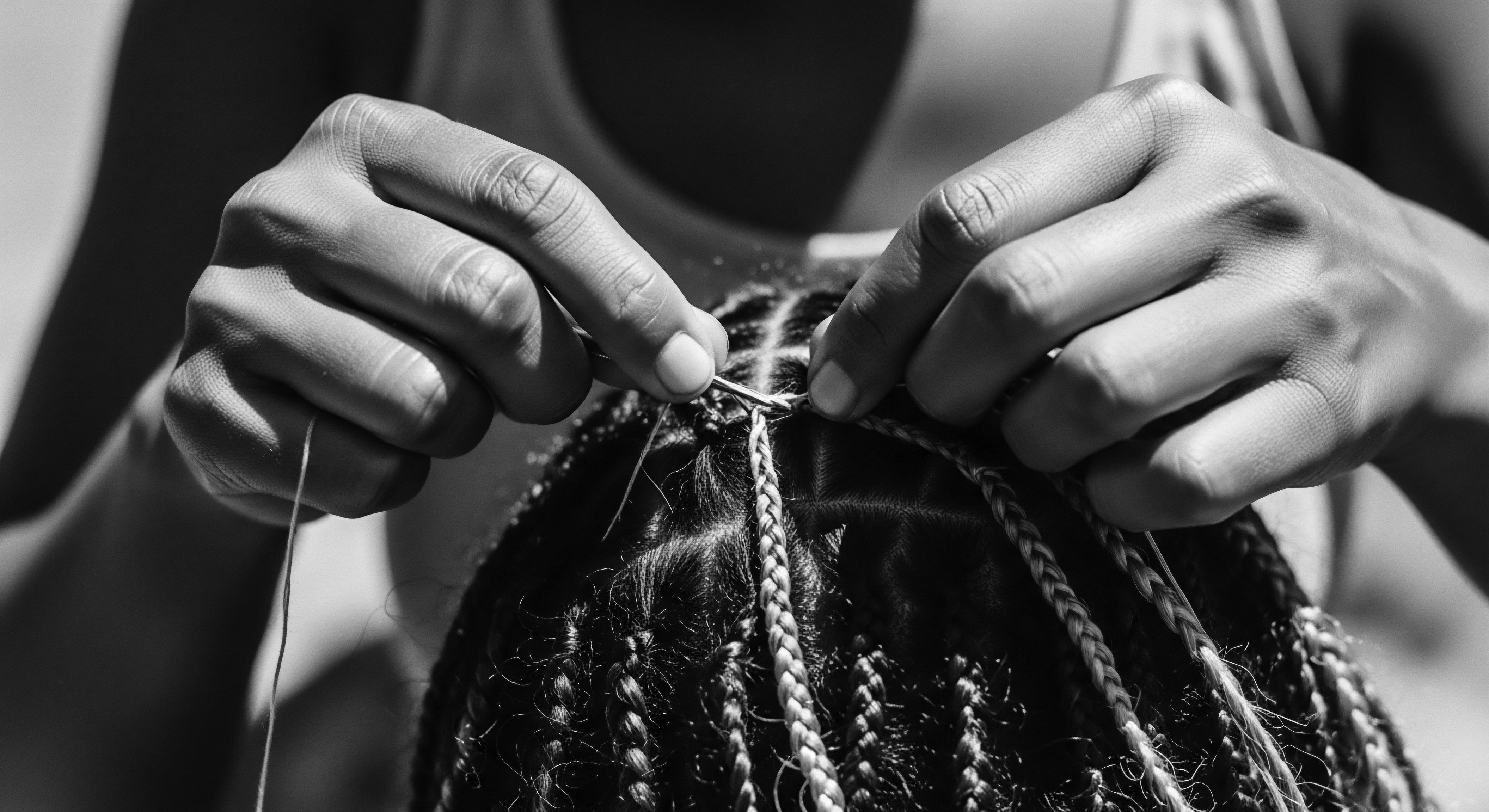
References
- Byrd, A. D. & Tharps, L. L. (2001). Hair Story ❉ Untangling the Roots of Black Hair in America. St. Martin’s Press.
- Gallagher, R. et al. (2023). The Archaeology of Shea Butter. Journal of Archaeological Science ❉ Reports, 47, 103814.
- Johnson, T. A. & Bankhead, T. (2014). Examining the Experiences of Black Women with Natural Hair. Journal of Black Studies, 45 (8), 753-772.
- Nnoruka, N. E. (2005). Hair loss ❉ is there a relationship with hair care practices in Nigeria? International Journal of Dermatology, 44 (S1), 13-17.
- McMichael, A. J. (2009). Hair Care Practices in African-American Patients. Seminars in Cutaneous Medicine and Surgery, 28 (2), 103-108.
- Nordin, A. (2009). Ritual Agency, Substance Transfer and the Making of Supernatural Immediacy in Pilgrim Journeys. Journal of Cognition and Culture, 9 (3-4), 195-223.
- Omotoso, S. A. (2018). Gender and Hair Politics ❉ An African Philosophical Analysis. Journal of Pan African Studies, 11 (5), 1-17.
- TRI Princeton. (2024). Claims Supports Methods for Textured Hair. (Internal Research Document).
- Dove. (2019). The CROWN Act ❉ The Crown Research Study. (Corporate Research Report).
- Walker, A. (1997). Andre Walker Hair Typing System. (Published Classification System).
